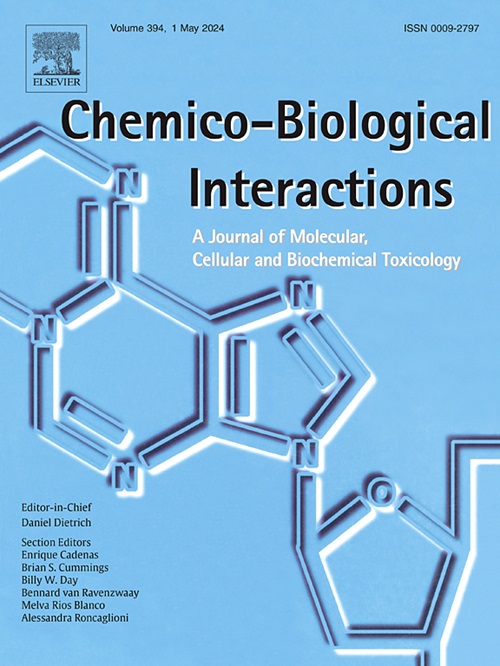YY1乳酸化通过靶向PU.1-BTG2轴促进口腔黏膜下纤维化,促进成纤维细胞衰老
IF 5.4
2区 医学
Q1 BIOCHEMISTRY & MOLECULAR BIOLOGY
引用次数: 0
摘要
口腔黏膜下纤维化(OSF)是一种常见于亚太地区的慢性纤维化疾病,与长期咀嚼槟榔密切相关。成纤维细胞衰老已知有助于组织纤维化,但其背后的分子机制尚不清楚。在这项研究中,我们探索槟榔果的关键成分槟榔碱如何影响成纤维细胞的行为。具体来说,用100 μM槟油碱处理人口腔成纤维细胞,显著增加了转录因子PU.1(嘌呤富盒1)(约3.5倍mRNA,约3倍蛋白)的表达。值得注意的是,PU.1(由SPI1编码)的过表达促进了胶原蛋白的产生,而其抑制则减少了纤维化标志物。为了进一步研究,RNA测序和生物信息学分析发现BTG2 (b细胞易位基因2)是PU.1的下游靶点。此外,ChIP-qPCR证实PU.1与BTG2启动子结合。进一步的检测,包括免疫印迹、免疫荧光和SA-β-gal染色,显示PU.1-BTG2轴促进成纤维细胞衰老和胶原积累。此外,进一步的分析显示,槟榔碱处理的成纤维细胞产生更多的乳酸,这导致转录因子YY1(阴阳1)的乳酸化增加。有趣的是,YY1被发现可以增强PU.1-BTG2的转录并驱动纤维化反应。关键的是,YY1在赖氨酸183处的突变阻断了它的乳酸化,并消除了它激活PU.1和BTG2的能力。最后,一个暴露于槟榔碱的OSF小鼠模型验证了该途径的关键体内方面,支持其生理相关性。总之,我们证明乳酸化的YY1通过激活PU.1-BTG2轴促进成纤维细胞衰老和胶原沉积。这一新发现的机制突出了治疗OSF的潜在治疗靶点。本文章由计算机程序翻译,如有差异,请以英文原文为准。
YY1 lactylation promotes fibroblast senescence by targeting the PU.1-BTG2 axis to promote oral submucous fibrosis
Oral submucous fibrosis (OSF) is a chronic fibrotic disease common in Asia-Pacific regions and strongly linked to long-term areca nut chewing. Fibroblast senescence is known to contribute to tissue fibrosis, but the molecular mechanisms behind it remain unclear. In this study, we explored how arecoline, a key component of areca nut, influences fibroblast behavior. Specifically, human oral fibroblasts were treated with 100 μM arecoline, which significantly increased the expression of the transcription factor PU.1(Purine-rich box 1) (∼3.5-fold mRNA, ∼3-fold protein). Notably, overexpression of PU.1 (encoded by SPI1) enhanced collagen production, while its inhibition reduced fibrotic markers. To further investigate, RNA sequencing and bioinformatics analysis identified BTG2 (B-cell Translocation Gene 2) as a downstream target of PU.1. Moreover, ChIP-qPCR confirmed PU.1 binding to the BTG2 promoter. Further assays, including western blotting, immunofluorescence, and SA-β-gal staining, showed that the PU.1-BTG2 axis promoted fibroblast senescence and collagen accumulation. Moreover, further analysis revealed that arecoline-treated fibroblasts produced more lactate, which led to increased lactylation of the transcription factor YY1(Yin Yang 1). Interestingly, YY1 was found to enhance PU.1-BTG2 transcription and drive fibrotic responses. Critically, mutation of YY1 at lysine 183 blocked its lactylation and eliminated its ability to activate PU.1 and BTG2. Finally, an arecoline-exposed OSF mouse model validated key in vivo aspects of this pathway, supporting its physiological relevance. Overall, we demonstrate that lactylated YY1 promotes fibroblast senescence and collagen deposition by activating the PU.1-BTG2 axis. This newly identified mechanism highlights potential therapeutic targets for treating OSF.
求助全文
通过发布文献求助,成功后即可免费获取论文全文。
去求助
来源期刊
CiteScore
7.70
自引率
3.90%
发文量
410
审稿时长
36 days
期刊介绍:
Chemico-Biological Interactions publishes research reports and review articles that examine the molecular, cellular, and/or biochemical basis of toxicologically relevant outcomes. Special emphasis is placed on toxicological mechanisms associated with interactions between chemicals and biological systems. Outcomes may include all traditional endpoints caused by synthetic or naturally occurring chemicals, both in vivo and in vitro. Endpoints of interest include, but are not limited to carcinogenesis, mutagenesis, respiratory toxicology, neurotoxicology, reproductive and developmental toxicology, and immunotoxicology.

 求助内容:
求助内容: 应助结果提醒方式:
应助结果提醒方式:


